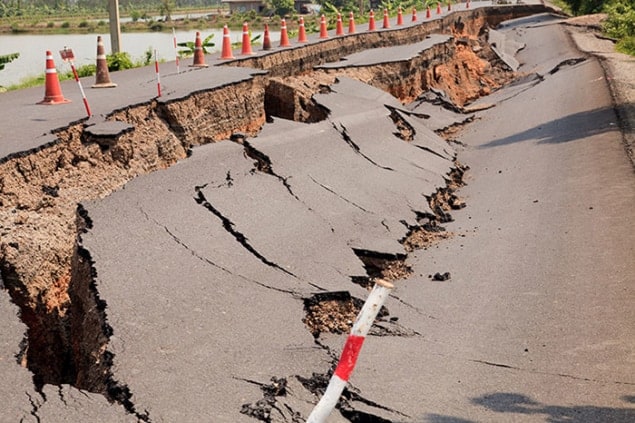
Future cities could be protected from destructive earthquakes using large-scale metamaterial shields to dampen seismic waves, according to new work done by researchers in Europe. The team used 3D modelling to demonstrate the potential of the shields, which are made of arrays of cavities dug into the ground.
Of all natural hazards, earthquakes are perhaps the most catastrophic – they account for more than half of all disaster-related mortalities and have the potential to cause billions of pounds worth of property damage if they strike major population centres. While buildings and other infrastructure can be individually engineered for earthquake resistance, such measures tend to be less effective against large quakes and difficult to implement post-construction, especially within historic buildings.
Inhibited waves
An alternative approach, however, lies in attenuating seismic waves before they can reach high-risk, built-up areas. The advantage of such an approach lies in how it could potentially be used to protect multiple existing structures, without the need for seismic retrofitting. This might be achieved using metamaterials, which allow waves to be manipulated in a variety of unconventional ways.
One previous study, for example, explored the potential of a metamaterial cloak that could be used to divert seismic energy around a structure.
In the new study, however, paper-author Marco Miniaci of the University of Le Havre, France, and colleagues explored the potential of creating band gaps – which inhibit the propagation of seismic waves within a certain frequency range – using locally resonant metamaterials and phononic crystals. Unlike previous studies exploring this approach, their work used 3D models capable of accounting for both body and surface seismic waves, as well as dissipation effects in layered soils.
Different shapes
The metamaterial configurations in their work were composed of two to three rows of cavities, or boreholes – in different shapes and with different fillings – positioned in a square array around the structure to be shielded. The team tested the effectiveness of three different cavity types: a cross-shaped cavity, a hollow steel- or concrete-lined cylinder, and a rubber-coated steel cylinder.
“The exact dimensions will depend on the soil type and the frequency range of the shield,” explains Miniaci, adding that “for sandy conditions and low-frequency seismic excitations, the width, spacing and depth of the cavities – which should be lined with concrete to prevent the surrounding soil from collapsing – could reach 10 m.”
Shields made of all three cavity types were found to be significantly effective in attenuating both bulk and surface waves – with the cross-shaped cavities most effective at attenuating the destructive surface waves. Alongside earthquake engineering, the researchers also propose that scaled-down versions of their arrays might be used to shield against other forms of vibration at higher frequencies. One such application would be in vibration damping around high-speed railway lines; another in creating improved blast protection.
Strong interplay
Bariş Baykant Alagöz, a physicist at the İnönü University, Turkey, who was not involved in this study, says that “the results look promising for the development of passive seismic shield technologies.” Francisco Meseguer – a physicist at the Universidad Politécnica de Valencia in Spain, who was also not a part of the team – agrees. But he also cautions against the assumption that attenuation strategies should focus on surface waves, however, noting that “there is also a strong interplay between bulk and surface waves when they propagate and also scatter in non-uniform soils composed of materials with different mechanical properties, like density and bulk constants.” Meseguer also comments that, while the shield could indeed be useful for protecting single buildings with a specific resonance response, the wavelength range of seismic movements is much larger than the phononic band gap studied.
With their initial study complete, the next steps towards developing their seismic-shield concept should involve experimental tests using scaled models in seismic and vibration labs, says Miniaci.
The research is described in the open-access New Journal of Physics.



